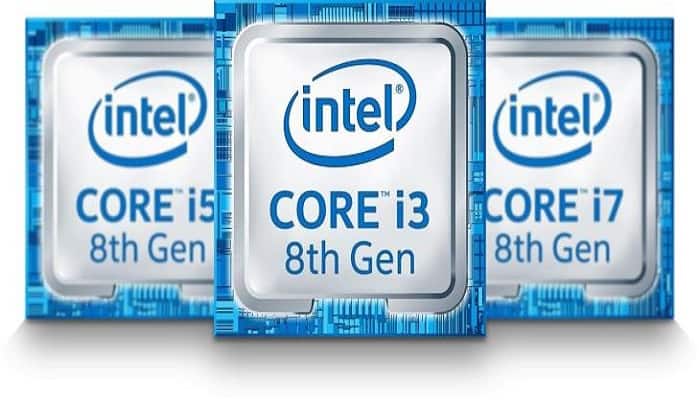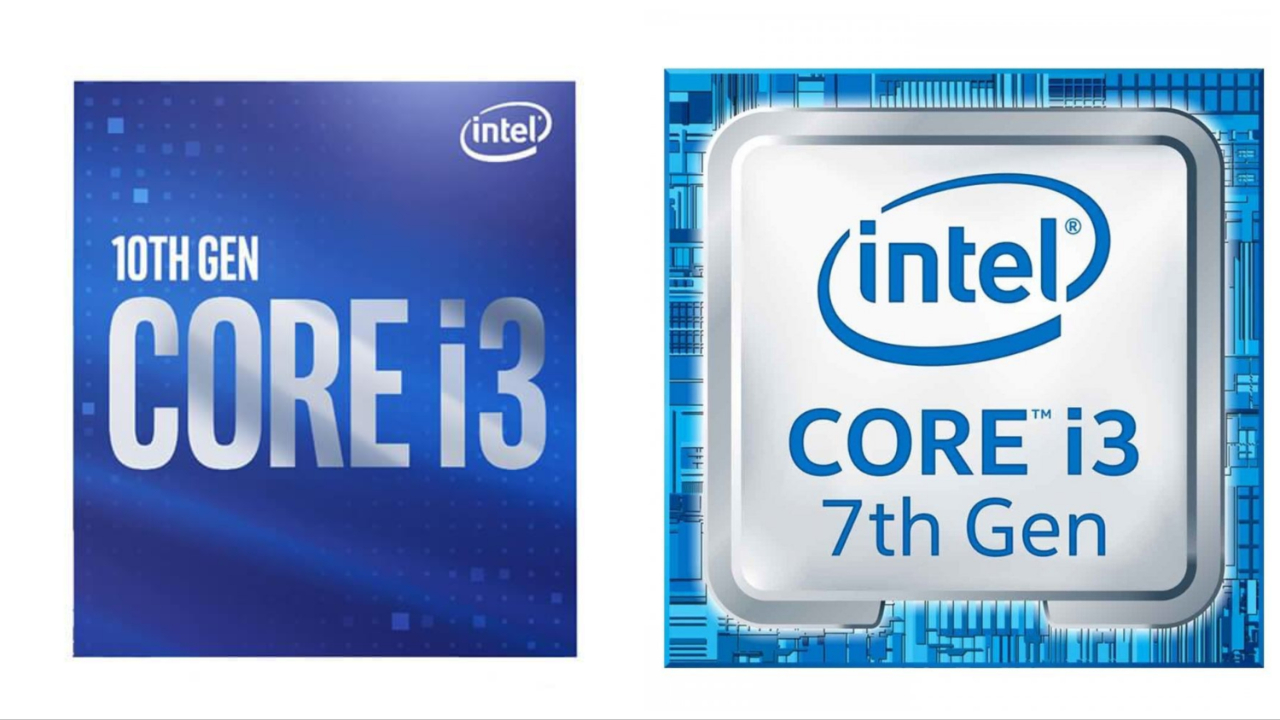In This Article
What is i3 Processor?
The i3 processor is a type of central processing unit (CPU) developed by Intel Corporation as part of their Core line of processors. It is designed to provide high performance and energy efficiency for personal computers and laptops, making it a popular choice for home and office use.
The i3 processor features multiple cores, each capable of processing multiple instructions simultaneously, which allows for faster and more efficient data processing. It also includes Intel’s Hyper-Threading technology, which simulates additional cores to further enhance performance.
The i3 processor is commonly found in entry-level and mid-range personal computers and laptops, and it is suitable for running basic applications such as web browsing, email, word processing, and multimedia playback.
KEY TAKEAWAYS
- Designed by Intel, the i3 processors come with different speed ranges, RAMs and power efficiency.
- The i3 processors have hyper-threading ability that allows running several programs at the same time with its four threads.
- If properly maintained and kept cool, an I3 processor can last for as many as 8 to 10 years.
- i3 processors have two to four physical cores.
Understanding i3 Processor

The i3 processor is designed and manufactured by Intel.
This dual-core processor is best for the laptops, though it can be used in a desktop computer as well.
The letter ‘i’ in the name of the core processor series along with the number indicates the Intel Core family.
You will get an i3 processor in different speeds ranging between 1.30 GHz, 3.50 GHz, and 3.8 GHz.
It also comes with a cache memory of either 3 or 4 MB.
This processor is attached to the motherboard either through an LGA 1150 or an LGA 1155 socket.
Most of the i3 processors use a DDR3 1333 RAM and a few others may also come with DDR3 1600 RAM as well.
You will find that these i3 processors have two cores, but there may be a few high-end variants that may also have four cores.
These are called quad-core processors.
As for the usage of power by the dual-core i3 processors, it may vary according to the speeds and as follows:
- It will use 11.5 W, 15 W or 25 W of power if it has slower speed of 1.30 GHz to 1.80 GHz,
- The medium speed processors of 2.00 GHz to 2.50 GHz will use either 28, 35, or 37 watts of power, and
- The processors with higher speed of 2.90 GHz to 3.50 GHz will use 35, 37 or 54 watts of electricity.
An active processor that uses hyper-threading will compute much faster, provided the cores are physical and not virtual.
If it is a quad-core processor and uses hyper-threading, it will perform even better and faster.
All i3 processors have hyper-threading ability but, according to the recent announcement of Intel, hyper-threading may be dropped from all processors except the i9 series.
Moreover, the Intel Core i3 series does not support Turbo Boost like the i5 and i7 series that may boost up the speed of completing a task or while computing.
The Intel Core i3 processor is the best processor for laptop computers, though it has only two cores.
Its performance is optimized by the hyper-threading feature, so much so that it performs like a quad-core processor.
Microarchitectures
Different generations of the i3 processors, whether it is for desktop computers, laptop computers or for the embedded systems, are built on different microarchitectures.
For the desktop computers:
- Different models of the 1st generation processors are built on Westmere microarchitecture with 32 nm manufacturing process
- Different models of the 2nd generation processors are built on Sandy Bridge microarchitecture with 32 nm manufacturing process
- Different models of the 3rd generation processors are built on Ivy Bridge microarchitecture with 22 nm manufacturing process
- Different models of the 4th generation processors are built on Haswell microarchitecture with 22 nm manufacturing process
- Different models of the 6th generation processors are built on Skylake microarchitecture with 14 nm manufacturing process
- Different models of the 7th generation processors are built on Kaby Lake microarchitecture with 14 nm manufacturing process
- Different models of the 8th and 9th generation processors are built on Coffee Lake S and Coffee Lake R microarchitectures respectively with 14 nm manufacturing process
- Different models of the 10th generation processors are built on Comet Lake microarchitecture with 14 nm manufacturing process and
- Different models of the 12th generation processors are built on Golden Cove microarchitecture.
For the laptop computers:
While the 1st to 4th generations of these processors have the same microarchitecture and manufacturing process as the desktop processors, different models of the 5th generation mobile processors are built on Broadwell microarchitecture with 14 nm manufacturing process.
And, different models of the 8th generation processors are built on Kaby Lake, Coffee Lake, and Whiskey Lake microarchitectures with 14 nm manufacturing process, and dual core Cannon Lake microarchitecture with 10 nm manufacturing process.
A few 10th generation models of mobile i3 processors come with Coffee Lake U microarchitecture with 14 nm manufacturing process as well as Sunny Cove and Ice Lake microarchitectures with 10 nm manufacturing process.
There are also 11th and 12th generation Intel i3 mobile processors available with Tiger Lake and Golden Clove plus Gracemont microarchitectures respectively.
The embedded processors however belong to the 2nd and 3rd generations and are built on Sandy Bridge 32 nm and Ivy Bridge 22 nm microarchitectures respectively.
System Requirements
If you wish to upgrade your older system to i3, you must make sure that the system supports it. The specific requirements include:
- A compatible motherboard
- A compatible socket depending on the processor series
- A DDR3 RAM with up to 1333 MHz frequency and
- A proper cooling system.
Life Expectancy

The i3 processor that works at 3.8 GHz, can last for about 8 to 10 years provided that you do not overload or run over its maximum voltage.
You must also make sure that it is kept adequately cool while you work on it.
The transistors used in it may degrade but it will take decades for that.
By that time, other components of the CPU may fail including the motherboard, hard disks, and power supply, if these are used under high load constantly and powered on all the time.
The processor may also fail due to an issue in the electrical supply or if you use a bad PSU.
You can measure the lifespan of your processor by using different statistics called MTTF or Mean Time to Failure.
Usually, the MTTF of processors is twenty years old but this statistical number is not a guarantee.
Therefore, to be on the safe side, consider the life expectancy of your i3 processor to be ten years.
There are also a few internal and external factors that will affect the lifetime of your processor. The internal factors are:
- Migration of metal and silicon atoms on the different layers of the chip
- Contamination on the parts of the processor
- Excessive heat
- A lot of static electricity and
- High voltages.
There may also be some manufacturing defects that may cause the processor to fail. This is called ‘Infant Mortality’ by the manufacturers.
This means that if the chip runs for a few months, chances are it will run for several years.
Manufacturers test these chips under high stress in their factory before including them in the CPU of a computer.
How Does i3 Processors Work?
The i3 processors use hyper-threading technology and run at 3.8 GHz.
This technology helps it work and appear like a processor that has more physical cores that are required for the necessary computing and transmission of data and information.
This technology helps the processor to run several different programs at the same time. Check out Intel Atom, Celeron and Pentium Processors.
This can be specific multimedia operations like rendering and transcoding or Web surfing that includes downloading and uploading different contents, images and other elements simultaneously.
The hyper-threading ability of the Core i3 versions helps the processors to handle four threads, even though these are all dual-core processors.
Questions & Answers:
Is i3 processor good?
Yes, and no. It is good depending on its generation, the speed you clock it at, and the purpose you are using it for.
These are good enough processor for gaming, no matter how bad people label them. On the other hand, it is bad because you cannot pair it with a GPU or an 8 GB RAM.
What i3 processor means?
The i3 processor is the budget member of the Intel processor family. It is a multi-core processor that is found in most of the laptops.
Using an i3 processor will help you to have much faster cycle times and it comes with superb computing power.
If you do not multitask on your computer or run software that is memory sensitive on a regular basis, an i3 processor is the right choice for you.
How many GHz is an i3 processor?
Ideally, an i3 processor will run at 3.8 GHz, though you will get a few that runs at 1.30 GHz and 3.50 GHz.
This speed is good enough for playing an average game on your computer.
Is i3 good for streaming?
If you use your computer for video streaming only then an i3 processor is good enough to meet your needs.
It will provide enough power and speed for your viewing pleasure.
However, you must make sure that the bandwidth of the ISP provider does not cause any issues while streaming HD videos with as low as 1 MB per second upload speed.
Is the i3 processor fast enough?
Yes, the current version of the i3 processors are fast enough even to stream videos of 1080p resolution.
If you follow Adobe you will know that you need at least an Intel Core Duo 1.8 GHz processor to stream HD video.
The i3 processor runs at 3.8 GHz, which is much higher than the minimum requirement to stream a video clip.
Summary
An i3 processor is a type of central processing unit developed by Intel as part of its Core line of processors.
It is designed to provide high performance and energy efficiency for personal computers and laptops, making it a popular choice for home and office use.
The i3 processor features multiple cores that allow for faster and more efficient data processing, and it includes Intel’s Hyper-Threading technology, which simulates additional cores to further enhance performance.
The i3 processor is commonly found in entry-level and mid-range personal computers and laptops and is suitable for running basic applications such as web browsing, email, word processing, and multimedia playback.
Different generations of i3 processors are built on different microarchitectures, and the power usage of the dual-core i3 processors may vary according to their speeds.
Overall, the i3 processor is an excellent choice for individuals looking for a cost-effective and efficient processing solution for their computing needs.